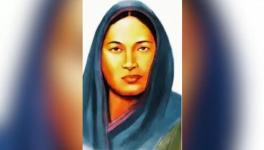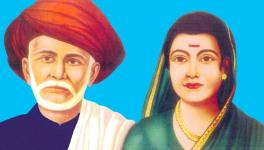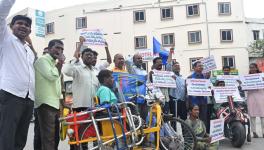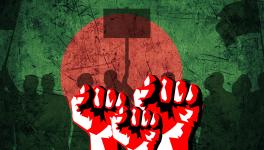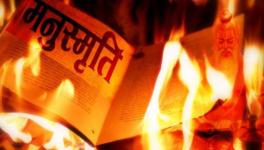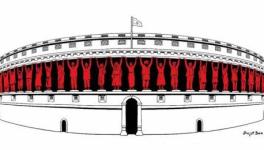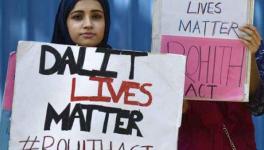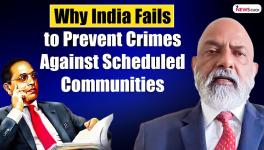Why Dalit Lives Struggle While Equality Gets Token Support
Representational use only.Image Courtesy: Huffpost.Com
In the 1850s, whenever social activist Savitribai Phule would leave home for the school for girls and lower caste students that she and her husband founded, elite caste residents would fling cow dung and mud at her. So repetitive was this practice that she started carrying a fresh set of clothes to change into on reaching the school. In 1923, the Bombay (now Mumbai) legislative council passed a resolution allowing the so-called lower castes to use public utilities managed and maintained by the government.
Following this historic decision—granting human rights is habitually considered historic in India!—in 1924, the Mahad municipal council passed a resolution to build a publicly-managed water tank accessible to the (former) untouchables. But the elite castes would not have it. They launched massive protests against the resolution. After almost three years, in 1927, Dr BR Ambedkar was forced to undertake the Mahad Satyagraha to translate the regulation into practice. When he and his associates tried to draw water from the public pond, the elite caste mobilised its members, who pelted stones at the Satyagrahis.
Saying caste discrimination and untouchability exist is to state the obvious. We need to scroll Facebook pages, or Twitter handles of leading news portals or merely search for ‘Dalit’, ‘violence’, ‘caste’ etc., online to know the gravity of the situation. Yet, the entire nation, especially the vocal upper caste middle class, suffers from collective amnesia on caste-based violence and discrimination. So we must ask, why are Dalit bodies subjected to brutal forms of violence, and why is their frequency rising over the past few years?
In March, Suraj Singh drove his motorbike over 800 km from Surat to Pali, his home district, to stab Jitendrapal Meghwal. What provoked Singh’s long, arduous journey? Singh was offended by Meghwal, a Dalit, for he had posted his picture on social media in which he was twisting his moustache and the caption read, ‘I am not rich, but I am royal at heart’. This stabbing is not an isolated incident. Dalits are attacked, stabbed, and lynched for sporting a moustache across the country. Stone-pelting by members of so-called upper castes on Dalit marriage processions in which the groom rides a horse is a typical affair. In February, the wedding procession of a Dalit IPS officer needed police protection because the members of elite castes had warned him against riding a horse!
Recently in the Jalore district of Rajasthan, nine-year-old Indra Meghwal, a Dalit, was beaten mercilessly by his elite-caste teacher for allegedly drinking water from a pot “reserved” for the teacher. After Meghwal died, the police, though still investigating the incident, claimed the beating had nothing to do with the water pot (and, therefore, caste). Even if it did not, what motivated—or compelled—a fully grown man to unleash such a brutal attack on a child that he died?
The violence unleashed on Indra was not the outcome of a random outburst of anger. It was the result of deep-seated hate, rage and resentment. The reason for such hatred lies in the noble concept of “equality”, something that everyone—yes, even those who belong to elite castes—says they want but are unprepared to work to build. In an unequal society, where a social group possesses wealth or cultural capital by its relative power and privilege, the pursuit of equality means letting go of power and privilege. Historically, those who enjoy these advantages never gave them up from goodwill or a sense of justice. The marginalised and oppressed have had to fight for their rights and equality. All the while, dominant groups resist any threat to their sense of entitlement.
In pre-modern eras, inequality was considered natural and god-given, especially by the dominant groups. They did not have to acknowledge equality exists even in the realm of ideas. But things have changed. Today, equality, human rights, and social justice are forces so powerful even those who oppose them must at least pay lip service. But inwardly, they seethe with anger at the prospect of losing power and social superiority. The constitutional-legal guarantees of equality and social justice make them feel helpless, and frustration builds up. This is a better explanation than any of what motivated the teacher in Jalore to thrash little Indra.
We see another expression of this long-standing frustration in the diatribes against reservation, in the countless narratives that begin like this: ‘I know a Dalit family which is rich, but they still enjoy reservation…’. Or, ‘My daughter scored 90% in the entrance exam but was unable to get a seat because someone with a reservation who scored 50% got the seat instead….’
These caste-centred narratives are nothing but eruptions of ingrained hostility and a false sense of grievances, where the elites perceive themselves as victims of egalitarianism. The advocates of so-called merit and victims of reservations never question why seats in educational institutions are not expanding to meet growing demand, why jobs are decreasing, or why opportunities are too few. Instead of the government or the economic system, the blame for failure or disappointment is shifted to historically marginalised peoples, who get accused of robbing caste elites of their prospects.
The 19th-century German philosopher Friedrich Nietzsche introduced the concept of ressentiment to refer to the sense of “hostility directed toward an object that one identifies as the cause of one’s frustration...”. The upper caste consciousness in India and white racists in the United States identify themselves as victims of affirmative action. They harbour hostility towards the Dalit-Adivasi and African-Americans, respectively. African-Americans have been attacked over affirmative action numerous times in the United States.
Prof John Fobanjong, in his 2001 book, Understanding the Backlash Against Affirmative Action, explains the rise of racist ‘skin-head’ groups in the United States during the recession of the 1970s and 1980s. When double-digit unemployment and out-of-control inflation pushed many into the margins, resentments and stresses among middle to lower-class white families grew. Their anger was directed at groups that appeared to be receiving and benefiting from affirmative action. For many whites, the Blacks became scapegoats, the source of their ressentiment. As a result, the marginalised Black communities were subjected to hostility, which manifested in the ‘skin-heads’ who unleashed violence to push to nullify all affirmative actions.
In India, violence against reservation policy has an indirect manifestation, as the Dalits are attacked for sporting a moustache or riding a horse, i.e., over cultural symbols. But these attacks have an economic angle. In other words, they are not isolated from the immediate questions of economic reservation and egalitarian politics. Neo-liberal economic policies have snatched away the security of many upper-caste middle-class families by making access to quality education and dignified employment difficult. Imagine a member of a caste elite community who harbours a sense of pride in their primordial identity. When they see a Dalit, Adivasi or backward class citizen in better socio-economic conditions, they view it as “theft” of what they consider is rightfully theirs. They fail to see it as a state or economic system failure.
This resentment has created a narrative heavily inspired by the grammar of caste. It goes like this: ‘These people are sitting next to us, stealing what should have been ours….’
Rising caste-based violence is an outcome of the resentment of upper castes towards the Dalits. It reflects their sense of loss of power due to the pursuit of egalitarian social levelling. This thread connects those upper castes who threw mud at Savitribai Phule, pelted stones on Ambedkar, or drove 800 km on a bike to stab an unknown Dalit and the grown-up who thrashed nine-year-old Indra.
Bijayani Mishra is an assistant professor, Department of Sociology, Maitreyi College, University of Delhi, and Harsh Vardhan is a doctoral candidate at the Centre for the Study of Social Systems, Jawaharlal Nehru University, New Delhi. The views are personal.
Get the latest reports & analysis with people's perspective on Protests, movements & deep analytical videos, discussions of the current affairs in your Telegram app. Subscribe to NewsClick's Telegram channel & get Real-Time updates on stories, as they get published on our website.









